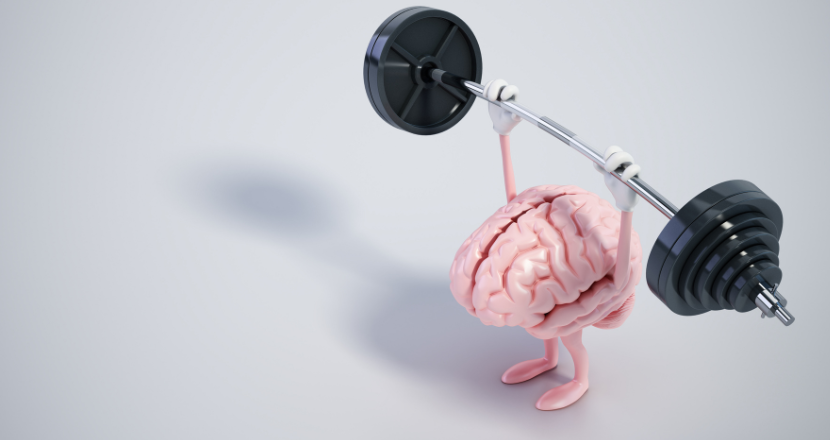Visualization for nervous system regulation is powerful, but it has a branding problem. For some, the word “visualization” often brings to mind long meditations, sitting still for hours, and forcing mental pictures that never come. For many living with chronic illness, that idea feels discouraging, or even impossible.
But in the re-origin program, visualization isn’t about perfect mental imagery. It’s about creating new sensory experiences that tell your brain, You are safe. When practiced consistently, these safety signals help rewire the nervous system (a process known as neuroplasticity) and support recovery from conditions rooted in chronic stress responses.
Visualization Without “Seeing”
If visual imagery doesn’t come naturally (or at all), you can engage your other senses instead. This is called sensory immersion: fully engaging with pleasant sights, sounds, smells, or physical sensations. Listening to calming sounds, recalling a comforting scent, or even imagining the feel of warm sunlight on your skin all activate similar pathways in the brain. This deepens relaxation and reinforces the brain’s sense of safety, supporting nervous system regulation and neuroplastic change.
- Sound: Recall the sound of ocean waves or birdsong.
- Touch: Imagine the warmth of sunlight on your skin or soft blankets around you.
- Smell: Bring to mind scents like pine trees, citrus, or coffee that evoke comfort.
- Movement or Body Sensation: Picture rocking gently in a hammock or walking barefoot on cool grass.
Sensory immersion engages the same neural pathways as visual imagery, deepens relaxation, and reinforces safety, all of which are essential for nervous system regulation and brain retraining.
Why Safety Cues Matter for Chronic Illness
Many chronic conditions involve a stuck stress response. The brain perceives threat even when none is present, keeping the body in a heightened state. By using visualization to immerse yourself in feelings of calm or comfort, you gradually teach your brain and body a new pattern: safety instead of alarm.
Over time, this shift allows the nervous system to maintain a parasympathetic state for longer periods of time, supporting healing and reduced symptoms.
How to Practice Visualization for Nervous System Regulation
- Pick one sense you connect with easily—sound, touch, or smell.
- Recall a safe memory or imagine a calming scenario tied to that sense.
- Engage deeply—describe it to yourself (e.g., “I feel warm sun on my arms and a light breeze”).
- Repeat often—short, frequent cues are more effective than long, occasional sessions.
- Observe subtle shifts—slower breathing, softer tension, or a sense of calm mean your brain is responding.
Frequency Over Duration
One of the biggest misconceptions is that you need upwards of 60 minutes to benefit from visualization. In reality, consistency is what rewires the brain. We suggest practicing for 5 minutes for practicality. When done consistently, it is enough to calm the nervous system and help retrain chronic stress patterns.
Visualization for Nervous System Regulation and Brain Retraining
At re-origin, we use visualization as more than a relaxation exercise. It’s an important neuroplastic training tool! There are many benefits, but in this blog post, we’ll highlight two:
Visualization Supports Nervous System Regulation
As mentioned previously, you’re sending powerful safety cues to your brain through visualization. It activates the parasympathetic nervous system, essential for rest, repair, and recovery. Shifting into this state more frequently is essential for neuroplastic healing because the brain learns best when it isn’t under a perceived threat. Over time, these repeated safety cues help quiet an overactive limbic system, reduce fight-or-flight responses, and create a physiological environment where healing can take place.
Learn more about the parasympathetic nervous system
Visualization (Mental Rehearsal) for Brain Retraining
When you visualize or imagine yourself engaging in activities calmly and confidently, your nervous system starts to believe it’s possible, even before you physically do it. Over time, these mental rehearsals reduce fear responses, create feelings of safety in your body, and help bridge the gap between where you are and where you want to be in your recovery.
Extensive neuroscience research shows that imagining an action activates many of the same brain regions as physically performing it.1 This process strengthens synaptic connections and helps rewire maladaptive patterns, essentially teaching the brain to respond differently to perceived threats.
Read: Can the Brain Heal Itself? Exploring Chronic Illness Recovery
In the context of brain retraining, visualization allows you to rehearse or practice new responses, reinforcing more helpful neural pathways without needing to experience your sparks in real time.
For example:
Crowded places: If walking into a busy grocery store feels overwhelming, you might repeatedly visualize yourself moving through the aisles with ease, feeling grounded and safe as you shop.
Physical activity: If exercise triggers symptoms, you could picture yourself enjoying a gentle walk in nature, focusing on the sounds of birds and the rhythm of your breathing.
Social events: If gatherings spark anxiety, you might rehearse entering a room, greeting people with confidence, and feeling relaxed during conversations.
Sensitivities: If loud noises, bright lights, food sensitivities, or strong smells typically trigger discomfort, you could visualize yourself feeling calm and steady while hearing gentle background sounds, seeing soft light, or smelling something pleasant. Over time, rehearsing these safe sensory experiences helps your brain associate those sensations with comfort rather than danger.
This mental rehearsal helps your nervous system learn new default responses, so when you eventually face the situation in real life, your body is already primed to respond with calm and resilience rather than fear. Incredible!
Try Visualization for Nervous System Regulation
The re-origin program offers step-by-step neuroplasticity tools, including guided sensory visualizations, that help calm your nervous system and create new, helpful brain pathways. These tools are designed specifically for people recovering from chronic conditions linked to stress and limbic system dysfunction. By practicing regularly, you’ll learn to shift out of fight-or-flight, foster resilience, and support long-term healing.
Learn more about the program here
Watch Guided Visualizations
Want to try visualization for nervous system regulation and brain retraining? Watch this video and feel the shift for yourself!








